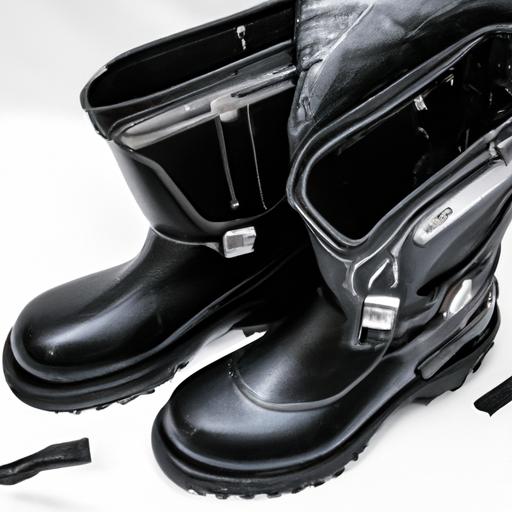What is MIPS Motorcycle Helmet? Understanding the Importance of Helmet Safety in Motorcycle Riding
Motorcycle riding is an exhilarating experience, but it comes with its fair share of risks. As motorcycle enthusiasts, we understand the thrill of hitting the open road and feeling the wind against our faces. But amidst this excitement, we must prioritize our safety. This is where the MIPS motorcycle helmet comes into play. In this article, I will delve into the definition of MIPS motorcycle helmets and emphasize the significance of helmet safety in motorcycle riding.
A. Definition of MIPS Motorcycle Helmet
You may be wondering, what exactly is a MIPS motorcycle helmet? MIPS stands for Multi-directional Impact Protection System. It is a revolutionary technology integrated into certain motorcycle helmets to enhance safety and reduce the risk of traumatic brain injuries. Unlike traditional helmets, which primarily focus on linear impacts, MIPS helmets are specifically designed to address rotational forces that occur during accidents.
B. Importance of Helmet Safety in Motorcycle Riding
Now that we have a basic understanding of MIPS motorcycle helmets, let’s talk about the importance of helmet safety in motorcycle riding. When you hop on your bike and hit the road, you expose yourself to various hazards. From unpredictable road conditions to distracted drivers, the risks are numerous. However, wearing a helmet can significantly mitigate these risks and protect your most valuable asset: your brain.
Studies have shown that wearing a helmet reduces the risk of head injuries by up to 69% and the risk of death by up to 42%. These statistics highlight the critical role helmets play in ensuring rider safety. Whether you’re a seasoned rider or a beginner, investing in a high-quality helmet should be a top priority. And when it comes to helmet safety, MIPS technology sets a new standard by providing additional protection against rotational forces.
In conclusion, understanding the definition of MIPS motorcycle helmets and recognizing the importance of helmet safety is crucial for every motorcycle rider. In the following sections, we will explore how MIPS technology works, its key features, advantages, and tips on choosing the right MIPS helmet. Let’s embark on this journey together and ensure we ride with both style and safety!
Understanding MIPS Technology
When it comes to motorcycle helmet safety, MIPS technology takes protection to a whole new level. Let’s dive deeper into understanding this groundbreaking innovation and its impact on reducing brain injuries.
A. Explanation of MIPS (Multi-directional Impact Protection System)
MIPS, which stands for Multi-directional Impact Protection System, is a system designed to mimic the brain’s natural protective mechanisms. It consists of a low-friction layer integrated into the helmet’s interior. This layer allows the helmet to rotate slightly upon impact, reducing the rotational forces transmitted to the brain.
By imitating the brain’s own protective mechanisms, MIPS technology provides added protection against brain injuries. It helps address the rotational forces that can occur during accidents, which traditional helmets may not adequately mitigate.
B. How MIPS Works in Motorcycle Helmets
Now that we understand the concept behind MIPS, let’s explore how it works within motorcycle helmets. MIPS technology incorporates a slip-plane system, which allows the outer shell of the helmet to move independently of the inner liner. This movement helps redirect and absorb the rotational forces generated during an impact, reducing the strain on the brain.
When an impact occurs, the MIPS layer allows the helmet to slide slightly, redirecting the rotational forces away from the brain. This reduces the risk of traumatic brain injuries, such as concussions and diffuse axonal injuries.
C. Benefits of MIPS in Reducing Brain Injuries
The benefits of MIPS technology in reducing brain injuries cannot be overstated. By addressing rotational forces, MIPS helmets offer enhanced protection compared to traditional helmets. Research has shown that MIPS helmets can reduce the risk of severe brain injuries by up to 30% compared to non-MIPS helmets.
Additionally, MIPS technology has been proven effective across a wide range of impact scenarios, including both high and low-speed accidents. This versatility ensures that riders are protected in various real-world situations, providing peace of mind on every ride.
In conclusion, understanding how MIPS technology works in motorcycle helmets is crucial for making informed decisions about your safety gear. The next section will delve into the key features of MIPS motorcycle helmets, shedding light on their structural design, integration of MIPS technology, and additional safety features. Let’s continue our exploration of this innovative safety solution.
Key Features of MIPS Motorcycle Helmets
When it comes to helmet safety, MIPS motorcycle helmets stand out with their unique features. Let’s dive into the key aspects that make these helmets a cut above the rest.
A. Structural Design and Components
MIPS motorcycle helmets are meticulously designed to provide optimal protection without compromising comfort. The structural design incorporates multiple layers of high-quality materials, such as polycarbonate, fiberglass, or carbon fiber, to ensure durability and impact resistance. These helmets often feature aerodynamic shapes, ventilation systems, and removable liners for enhanced comfort during long rides.
B. Integration of MIPS Technology in Helmet Construction
The integration of MIPS technology sets these helmets apart from conventional options. MIPS consists of a low-friction layer positioned between the helmet’s outer shell and the inner padding. This layer allows the helmet to move slightly during impact, reducing rotational forces transmitted to the brain. By mimicking the brain’s natural protective mechanisms, MIPS technology significantly enhances brain safety in the event of an accident.
C. Additional Safety Features in MIPS Helmets
In addition to the MIPS technology, these helmets often come equipped with supplementary safety features. These may include reinforced chin straps, impact-absorbing padding, and adjustable visors to shield your eyes from glare and debris. Some models incorporate reflective elements to improve visibility, especially during nighttime riding. These extra safety features further contribute to the overall protection and peace of mind that MIPS motorcycle helmets offer.
By combining a thoughtfully designed structure with the integration of MIPS technology and additional safety features, MIPS motorcycle helmets provide riders with comprehensive protection against potential injuries. In the next section, we will explore the advantages of using MIPS motorcycle helmets and delve deeper into the impact of MIPS technology on brain safety. Strap on your helmet, and let’s continue our journey towards safer riding!
Choosing the Right MIPS Motorcycle Helmet
When it comes to motorcycle helmets, one size does not fit all. Each rider has unique preferences and requirements. To ensure maximum effectiveness and protection, it is crucial to choose the right MIPS motorcycle helmet. In this section, we will explore the factors to consider before purchasing, the importance of evaluating helmet safety certifications, and the significance of finding the perfect fit.
A. Factors to Consider Before Purchasing
Before investing in a MIPS motorcycle helmet, there are several key factors to consider. Firstly, think about your riding style and the type of terrain you typically encounter. Are you an off-road enthusiast or a street rider? This will help determine the specific features you need in a helmet. Additionally, consider the climate in which you ride. If you frequently ride in hot weather, ventilation becomes a critical factor for comfort and breathability.
Another crucial consideration is the helmet’s weight. A heavy helmet can cause strain on your neck and lead to fatigue during long rides. Look for a helmet that strikes a balance between weight and protection. Lastly, don’t forget about style! While safety is paramount, finding a helmet that reflects your personality and style adds an extra touch of excitement to your riding experience.
B. Evaluating Helmet Safety Certifications
When browsing for MIPS motorcycle helmets, keep an eye out for safety certifications. These certifications ensure that the helmet meets rigorous safety standards and has undergone thorough testing. Look for certifications such as DOT (Department of Transportation), ECE (Economic Commission for Europe), and Snell (Snell Memorial Foundation). These certifications indicate that the helmet has passed impact, penetration, and retention system tests.
C. Finding the Right Fit for Maximum Effectiveness
The right fit is crucial for the effectiveness of your MIPS motorcycle helmet. An ill-fitting helmet can compromise safety and comfort. When trying on helmets, ensure a snug but not overly tight fit. The helmet should sit low on your forehead, just above your eyebrows, and the cheek pads should provide a secure and comfortable fit. Additionally, check for any pressure points or discomfort during extended wear.
Keep in mind that different helmet brands and models may have varying sizing charts, so it’s essential to measure your head circumference accurately and refer to the manufacturer’s guidelines. Remember, a well-fitting helmet will provide optimal protection against rotational forces and reduce the risk of brain injuries.
In conclusion, choosing the right MIPS motorcycle helmet is a crucial step in ensuring your safety on the road. Consider factors such as riding style, climate, weight, and style preferences. Additionally, evaluate helmet safety certifications to guarantee that your chosen helmet meets industry standards. Lastly, prioritize finding the perfect fit for maximum effectiveness and comfort. By carefully selecting your MIPS helmet, you can ride with confidence, knowing that you have taken the necessary steps to protect yourself on every journey.



